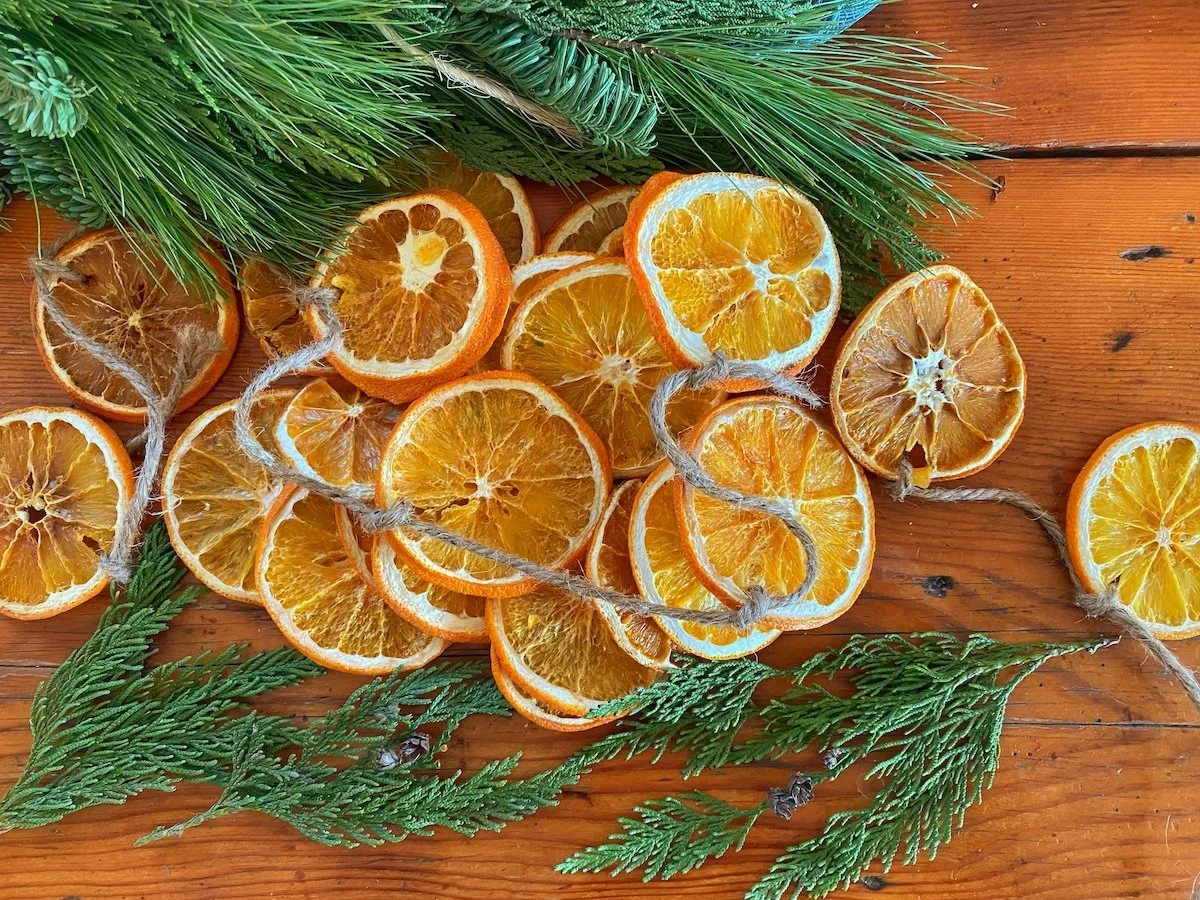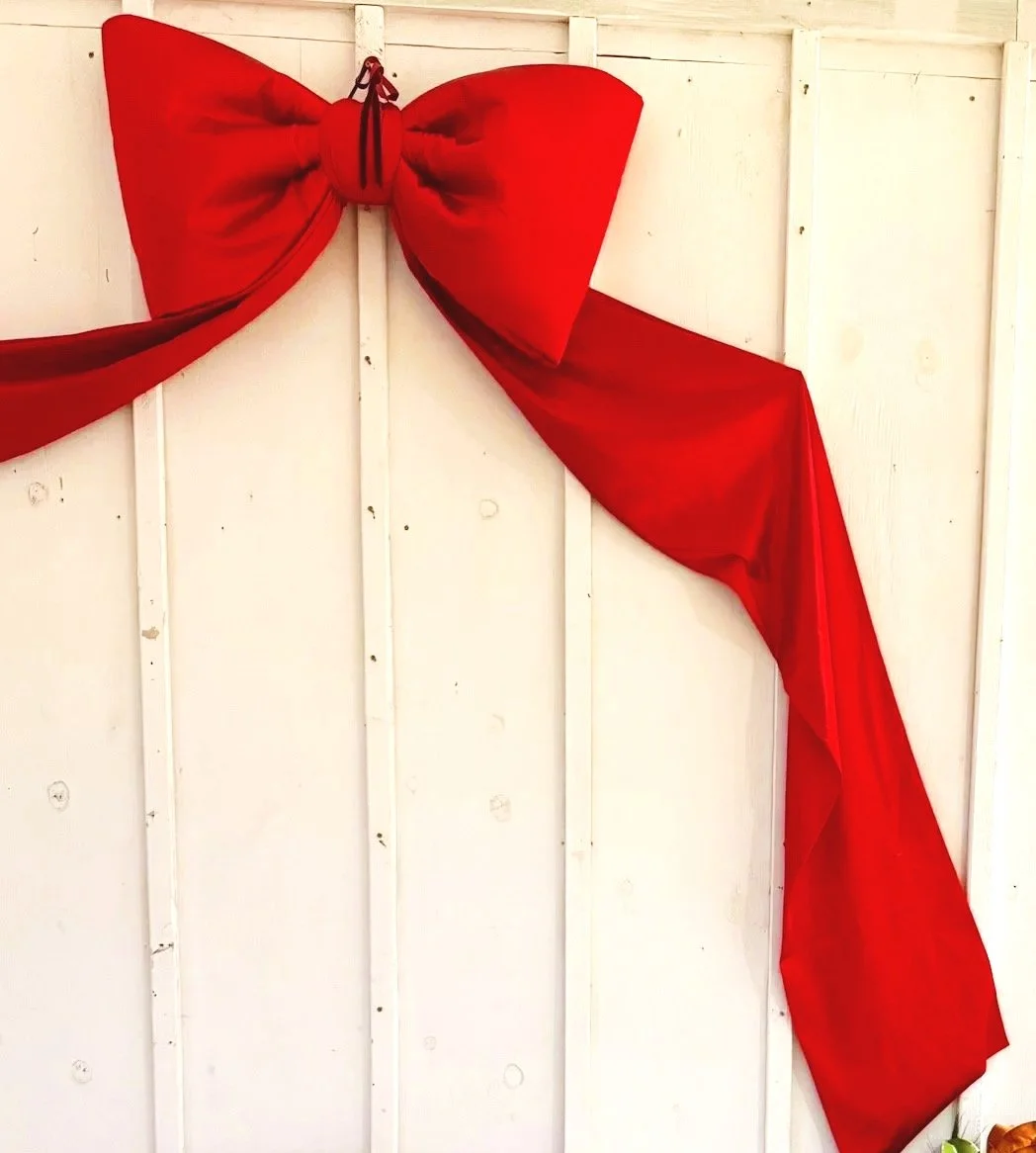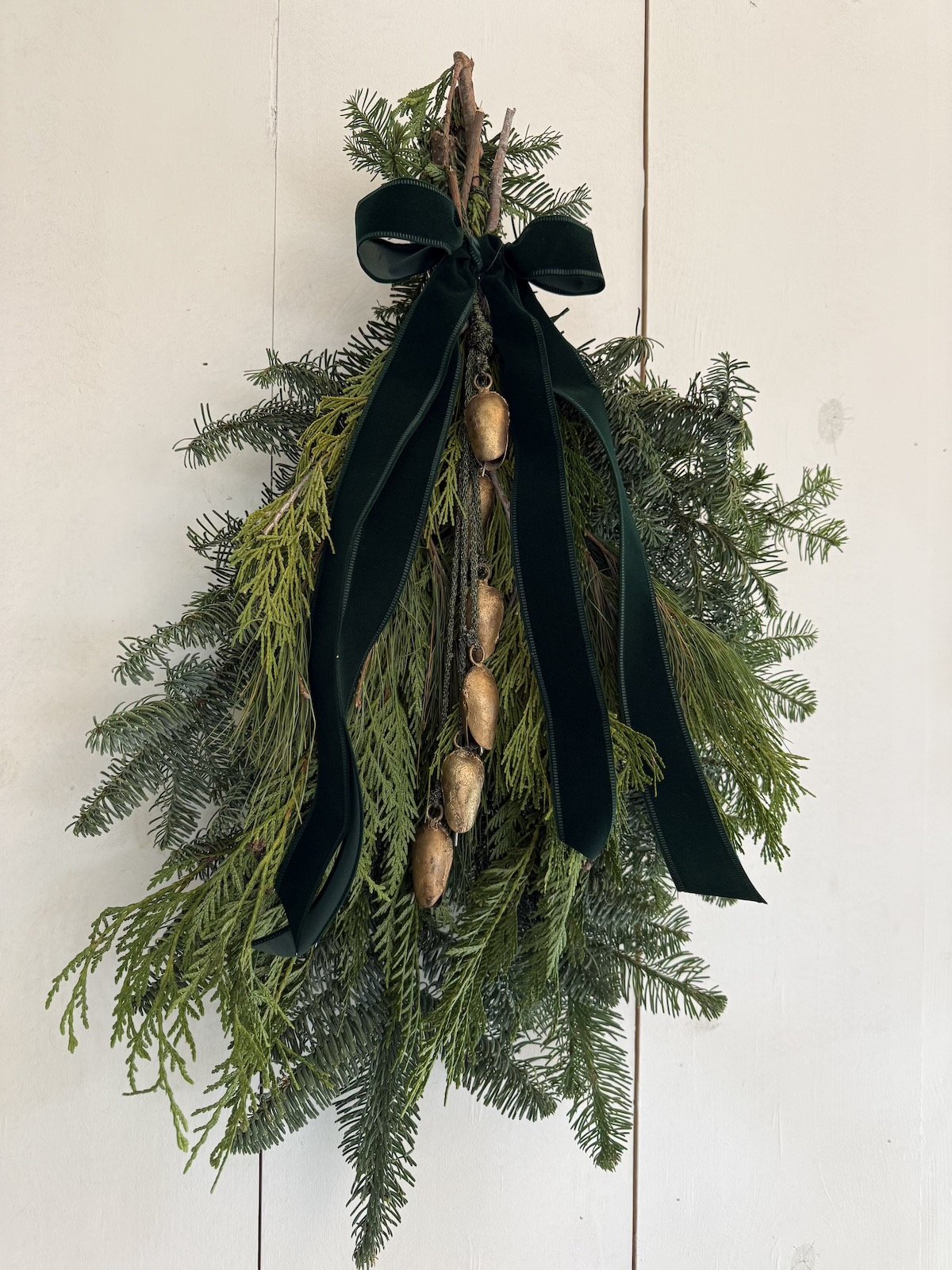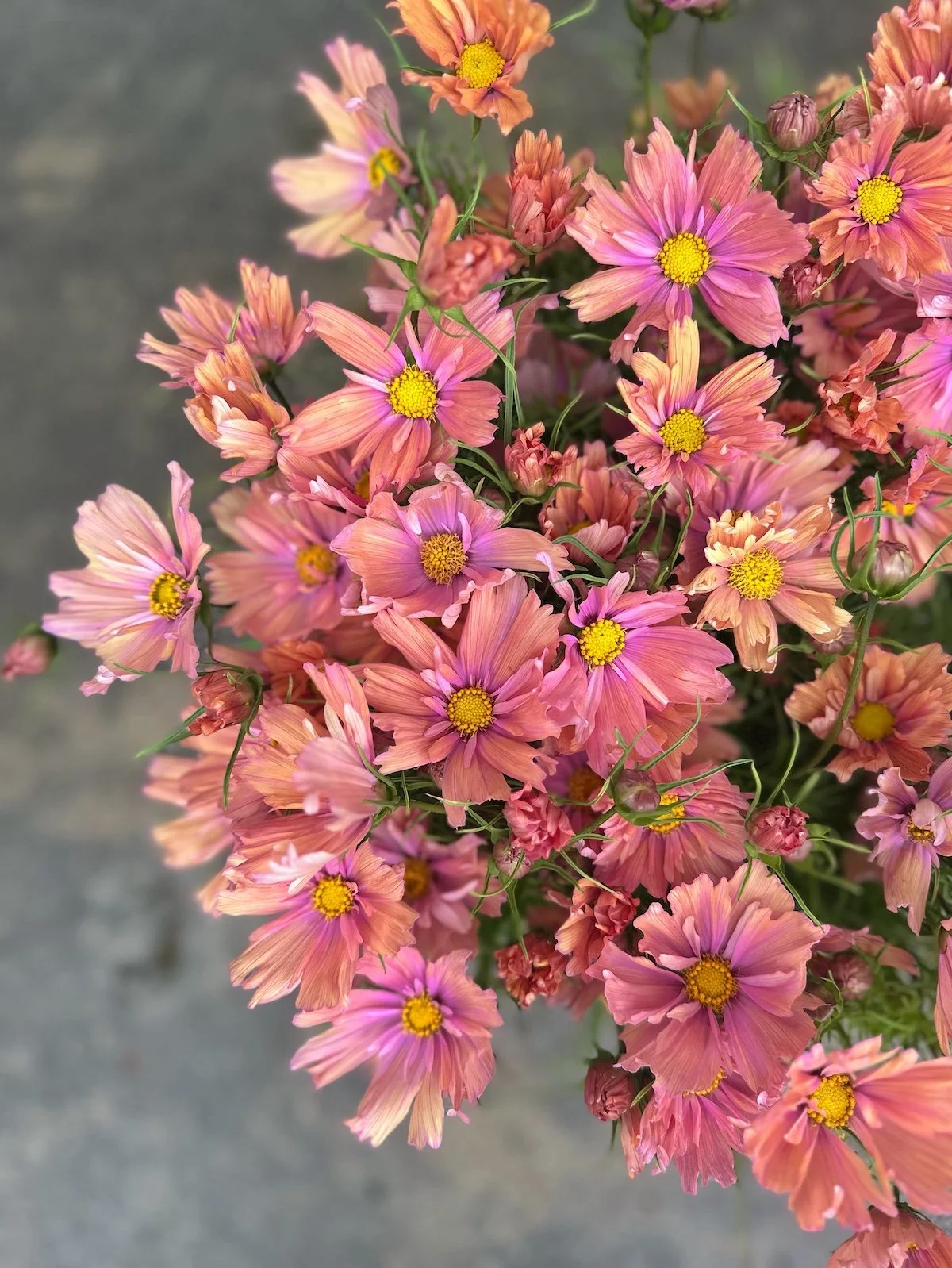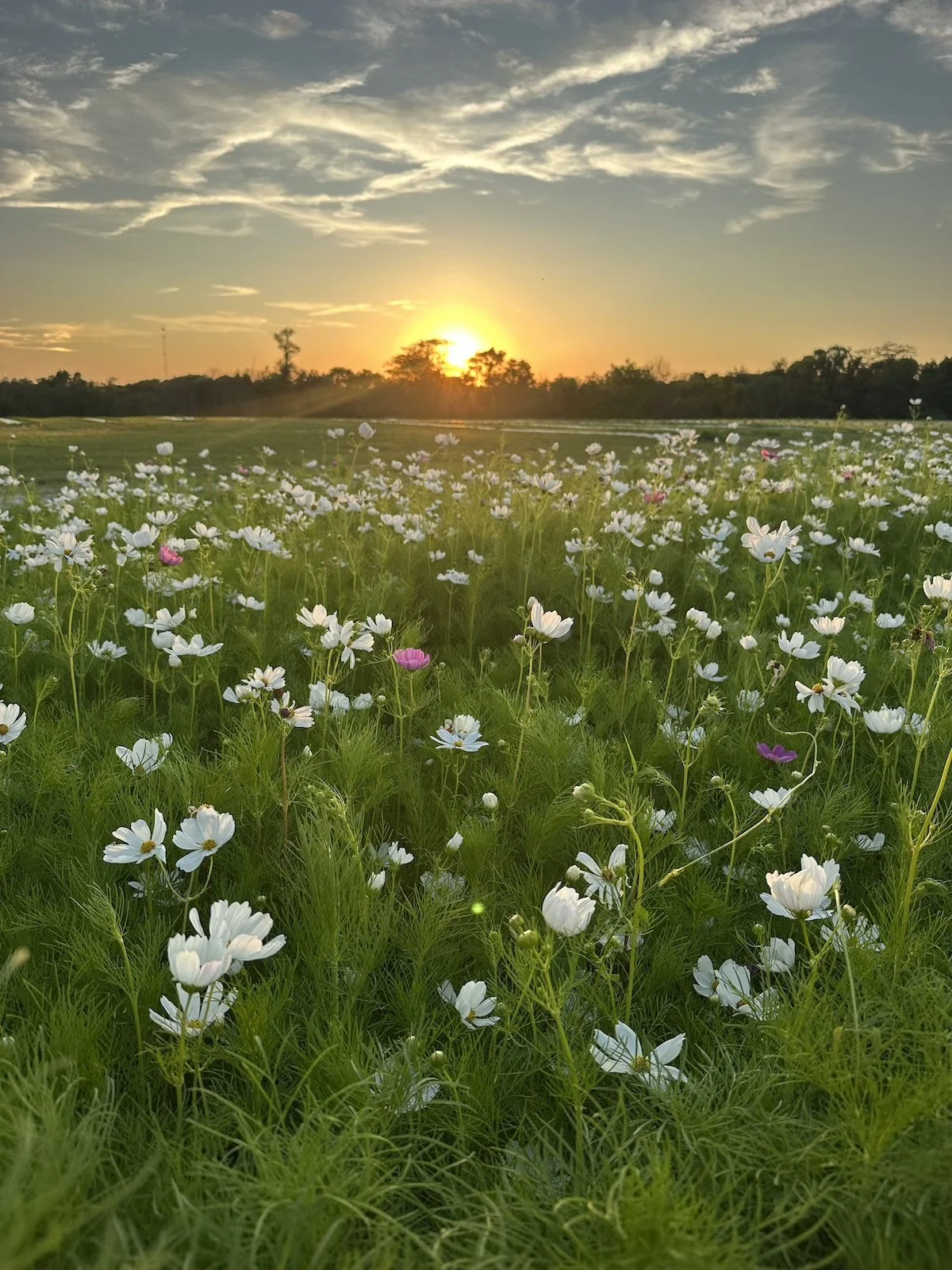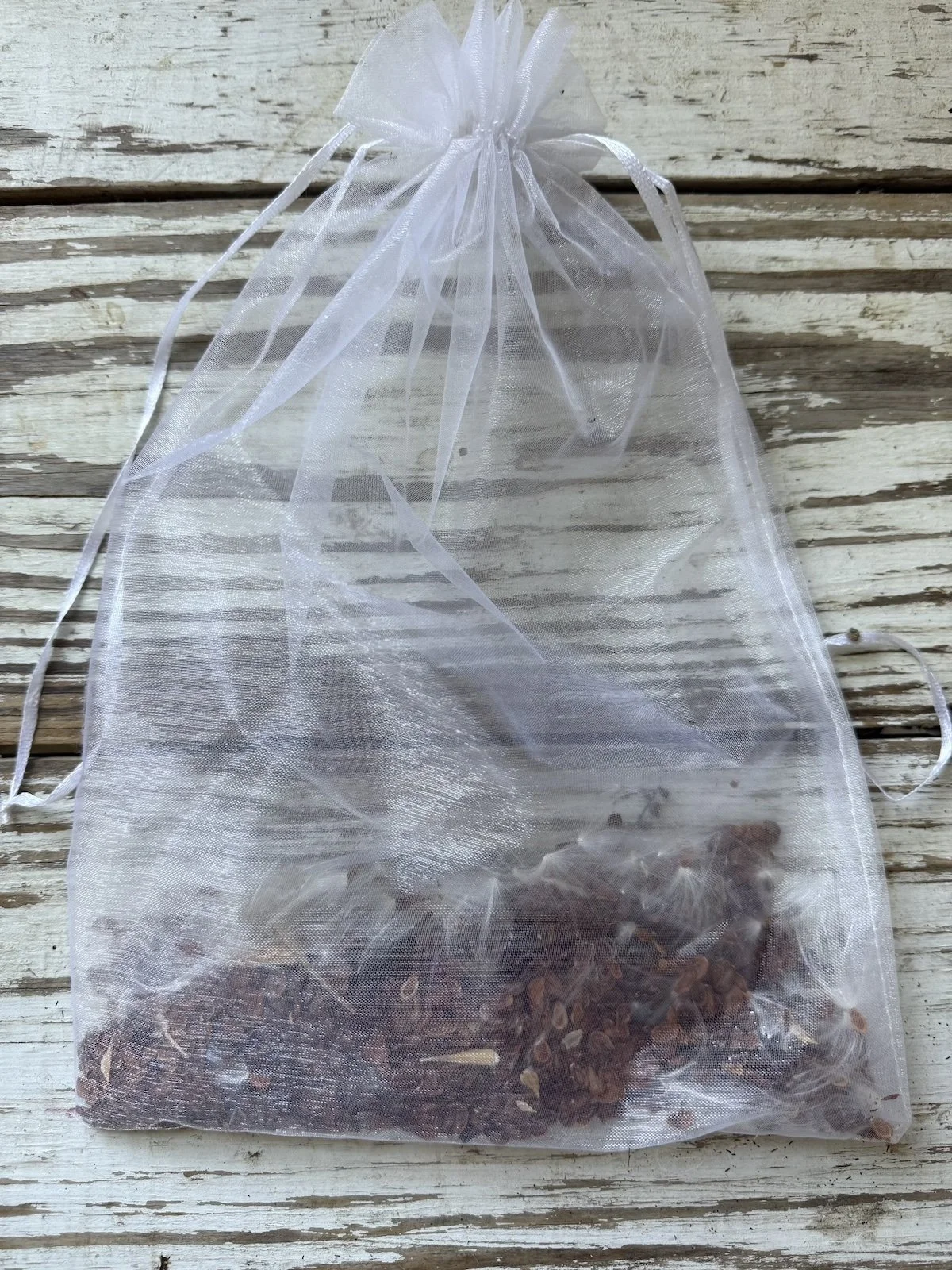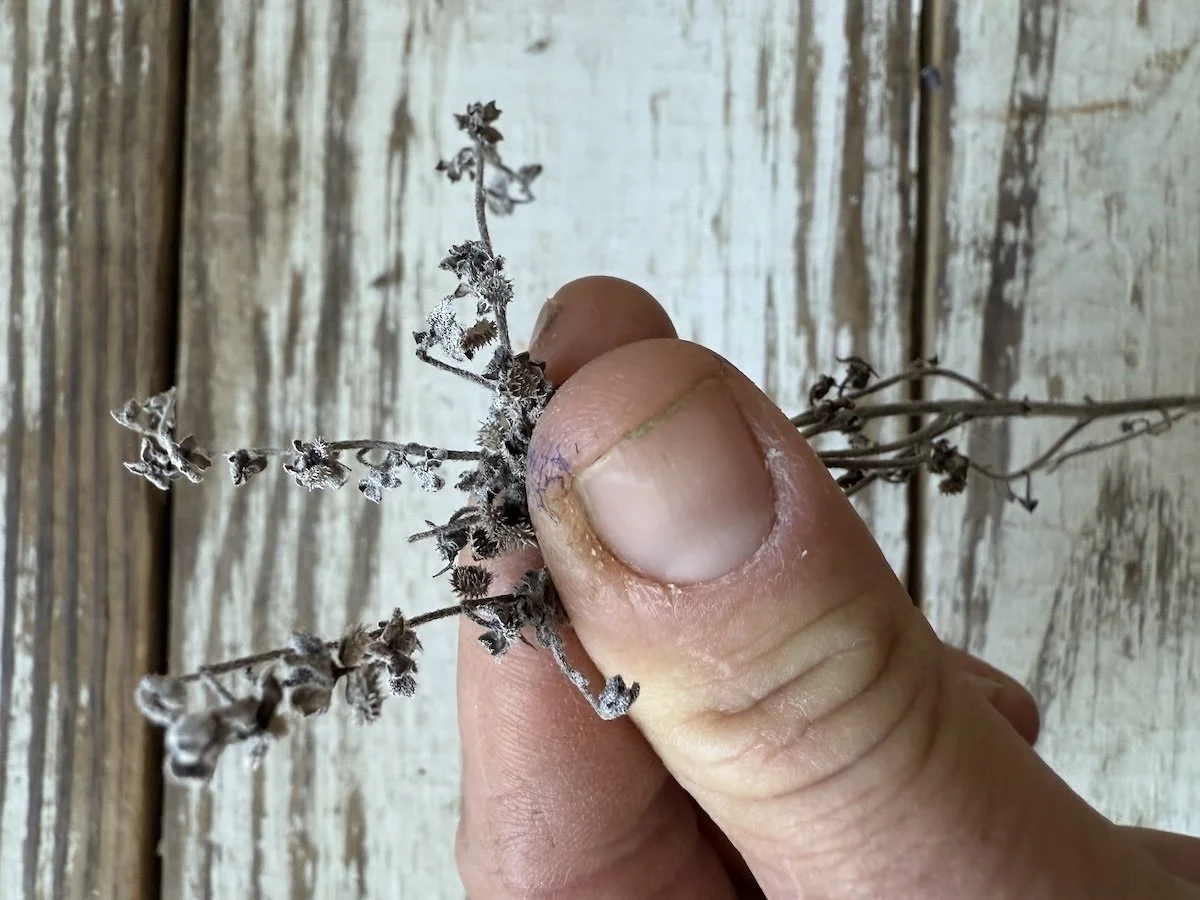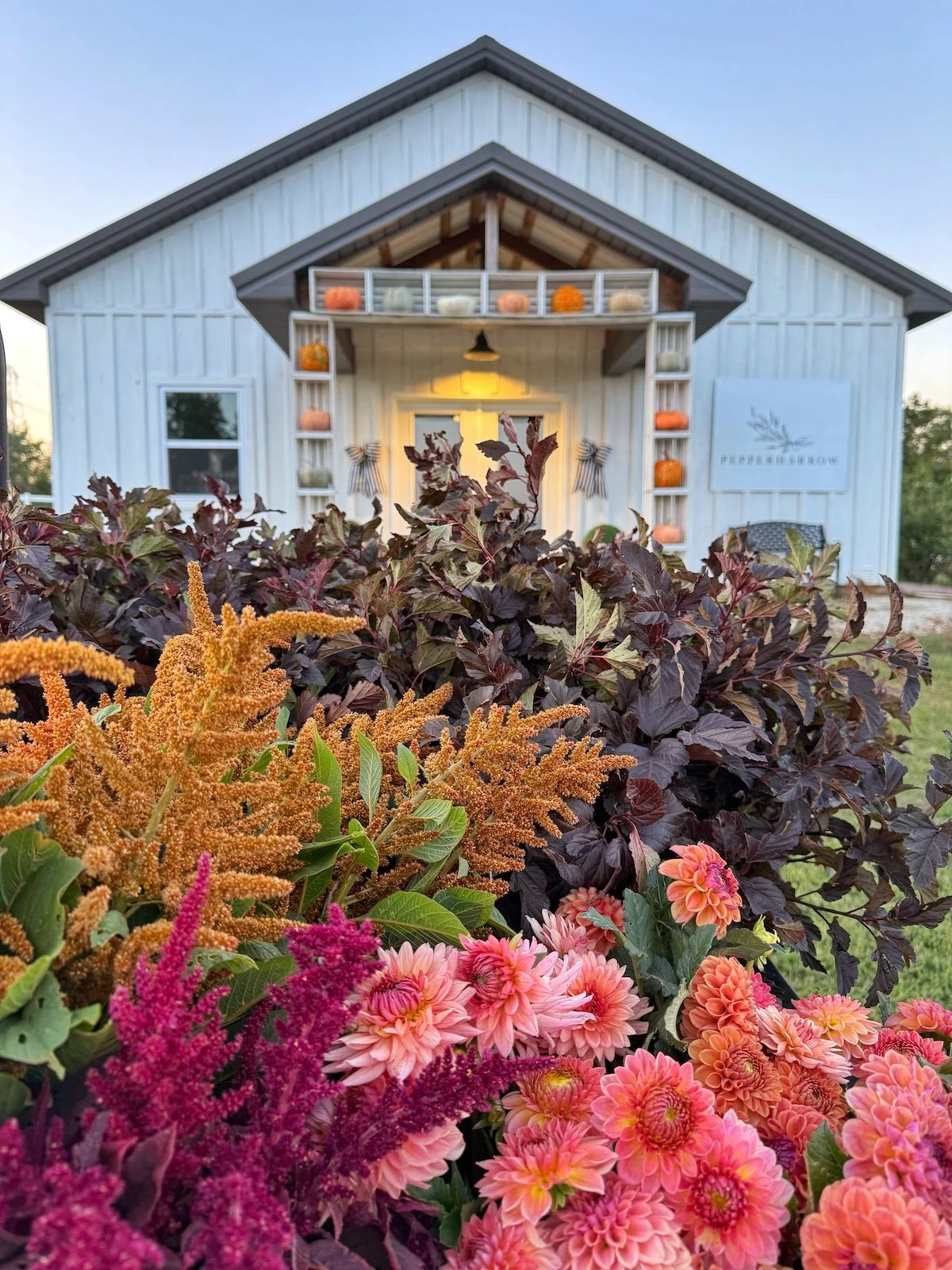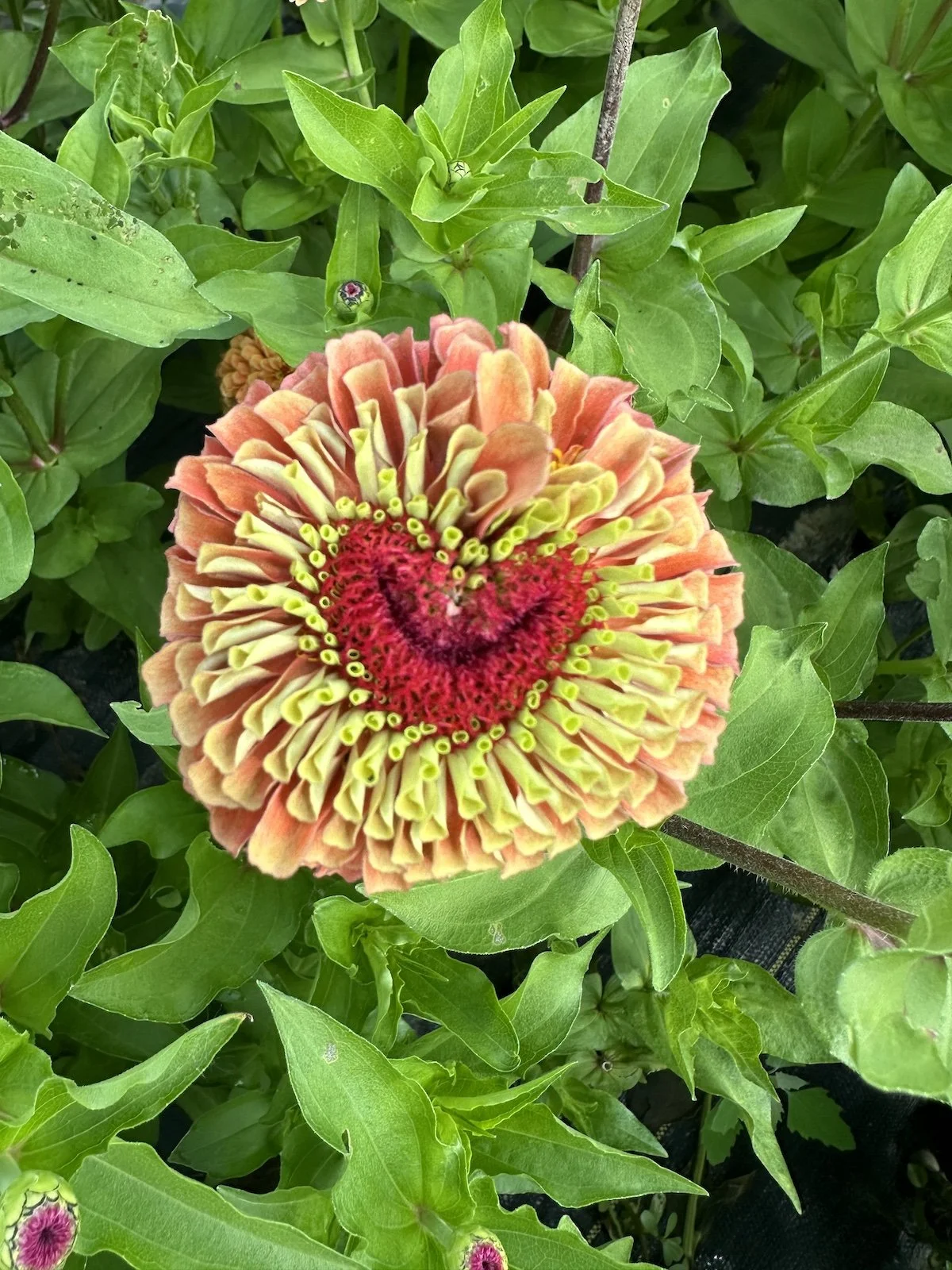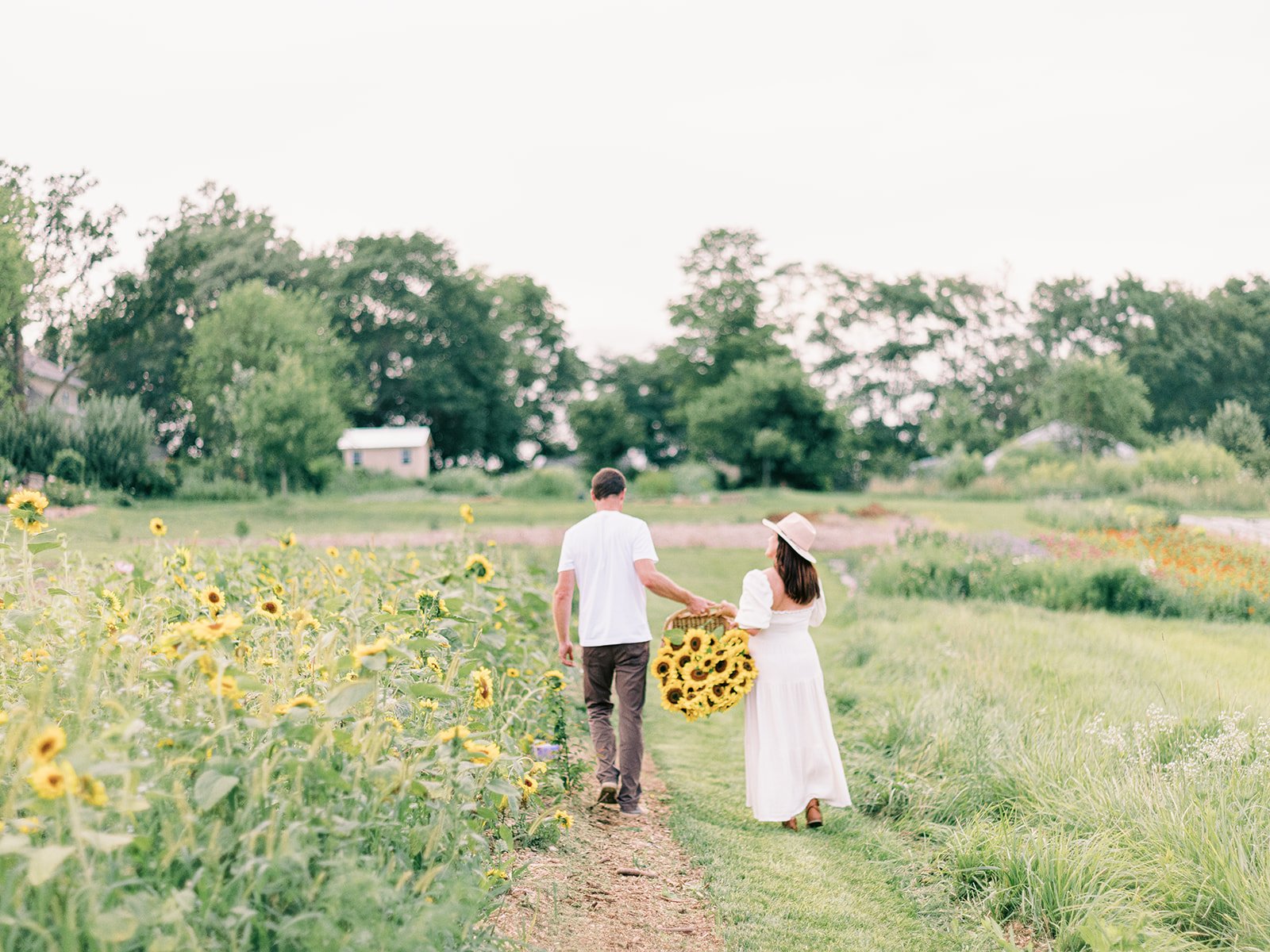
Holiday Style Guide 2025
Handmade Beauty, Oversized Accents, and Rich Jewel-Tone Warmth
As winter starts to set in and the holiday season draws closer, we find ourselves returning to the comforting traditions that make this season feel so special. The holidays have always been about warmth, and the simple beauty of nature. This year’s Holiday Style Guide celebrates the spirit of that, with a focus on handmade décor, gorgeous accents, and a rich, jewel-toned palette that fills every space.
Handmade Holiday Magic
The heart of the 2025 holiday season is a return to handmade, meaningful details. Decorations that feel touched by human hands bring a softness and authenticity that mass-produced pieces can’t replicate. This trend honors craft, patience, and the quiet joy of creating something beautiful.
Here are a Few Easy to Make Ideas!
Paper ornaments and simple handcrafted details
We love making cinnamon ornaments to our tree for a wonderful fragrance and they’re pretty easy to make! Another easy, but elegant touch is to cut your own paper snowflakes, a tradition that was passed down from my Great Grandma Vera.
Greenery foraged from the yard or farm for a grounded, natural touch
Grab a few small side branches off of a pine tree, or similar. Adding just a few pieces of greenery to your mantle, dining table, or other areas around your home, not only looks beautiful and inviting, but it also smells wonderful!
The goal for handmade items is to surround yourself with décor that feels personal, thoughtful, grounded, and connected to the season.
Dried Citrus for Decorations
Dried citrus garlands with all oranges orange mix of, ruby grapefruit, limes, and lemon for a refreshing take on dried citrus decorations for the holiday.
Handmade Candles
Hand-poured candles cast a warm, gentle glow. They’re perfect to make handmade gifts for your home, or to be made as thoughtful, easy to make handmade gifts for others.
Oversized Bells for Bold Warmth
Oversized bells are one of the standout accents for 2025. Their weight, texture, and scale add warmth and interest to even the simplest displays. With an antiqued finish, they carry the charm of old-world décor and elegance.
Ideas on How to Style Them:
+Add one or two large bells to a wreath for a strong focal point
+Hang a cluster from a newel post or staircase for a festive welcome
+Pair bells with draping ribbon for a classic holiday arrangement
These festive accents anchor a room and balance the lighter, handmade elements of the season.
Generous Bows
Oversized bows take a starring role in 2025. Large, voluminous bows bring softness, elegance, and just the right amount of drama. Velvet, silk, and soft cotton ribbons in rich jewel tones elevate any arrangement.
A Few Ideas for How to Use Them to Decorate:
Add a large bow with long tails as a tree topper for a gorgeous focal piece.
Finish wrapped gifts with an oversized bow for a luxurious touch
Pair ribbons with bells or greenery for layered styling
This is the year to let your bows take up space, adding movement and beauty wherever it’s used.
Oversized Bows
This year, we added an oversized bow for decoration in our event barn for guests to grab a photo or two during wreath making workshops.
Embracing Simplicity
While we do love big bows, it’s worth meting. that for wreaths this year, many are opting for minimalist bows, so they can add elegance, but not detract from the wreath itself. They’re going with bows tied with a knot added somewhere (top, bottom, sometimes the side) to the wreath with simple tails hanging down, or a sash, as shown (right).
The 2025 Color Story
This year’s palette is rooted in heirloom tones and the quiet glow of winter evenings. They’re colors that feel storied, collected, like something out of a Victorian Christmas. These hues are inspired by vintage holiday postcards, and worn velvet ribbons tucked in old keepsake boxes.
Deep jewel tones mingle with warm neutrals and antiqued gold accents, creating a look that feels both luxurious and lived-in. It’s an elevated palette that still invites you to settle in, relax, and enjoy the season.
Red to Dark Red
A rich, moody red that instantly brings a sense of tradition and warmth. This shade adds depth to mantles, garlands, and tablescapes, grounding your holiday décor with festive elegance.
Burgundy
Velvety and timeless, burgundy is the anchor of this year’s color story. It pairs beautifully with both greenery and gold, adding a romantic, old-world feel to ribbons, florals, stockings, and ornament collections.
Essex Green
A classic, sophisticated green that evokes evergreen forests and hand-cut wreaths. Essex Green is the quiet hero of the palette—deep and grounding, yet refined. It complements both rustic textures and refined holiday elements, making it an easy, versatile choice throughout the season.
Accents of Antiqued Gold, Brass, or Bronze
Any of these rich jewel tones with added antiqued metal elements create a palette that feels luxurious without being showy, perfect for both modern and traditional holiday decorating. They’re perfect with the jewel tone colors as a perfect rustic, but elevated accent.
A Season to Enjoy
The PepperHarrow look for Holiday 2025 blends handmade charm, expressive accents, and rich jewel tones into a style that feels both curated and deeply comforting. It is holiday decor that looks collected over time rather than purchased all at once. Every piece feels intentional. Every element carries warmth. To bring this style to life in your own spaces, let your décor evolve through natural textures, generous layering, and thoughtful details.
Adding Organic Elements
A grapevine wreath base with light greenery (Noble Fir), pine cones and a few small sparkles, really makes a home cozy and inviting..
Holiday decorating isn’t about chasing perfection or adhering to rigid trends. It is about creating an environment where people feel welcome and connected. A space filled with handmade details, thoughtful touches, and rich textures has a way of gathering everyone a little closer.
Whether you're crafting décor with your own hands, refreshing your home with new seasonal elements, or honoring beloved traditions passed down through the years, may this guide inspire you to fill your spaces with meaning, warmth, and beauty.
XX Jenn + Adam
Common Issues with Cosmos and How to Fix Them
We’ve always had a soft spot for cosmos. How can you not love them? Their airy, fern-like foliage and cheerful, daisy-style blooms always seem to dance in the breeze. They’re the kind of flowers that seem to bloom with ease, happy to grow bloom for new gardeners and veteran growers like us, looking for a low maintenance bloom.
But even these carefree charmers can have their off days. Maybe they’re not blooming as they should, looking a little wilted, or showing signs of pest mischief. Don’t worry, there’s usually a simple reason behind it and an easy fix to get them thriving again. Here’s a look at some of the most common cosmos troubles we see here at the farm and how to help your plants bounce back.
Heat Stress
Cosmos are known for being heat-tolerant, but extreme heat, especially prolonged periods above 90°F (32°C), can lead to stress. This can result in fewer blooms, smaller flowers, wilting, and even scorched leaves. Our cosmos really struggle growing during the heat intense summers of Central Iowa, zone 5b. Here’s the tips we have for handling the heat!
How to Fix It:
Water deeply, but infrequently. Let the soil dry slightly between waterings to avoid root rot.
Add a 2–3-inch layer of organic mulch to insulate roots and holds moisture.
Use a shade cloth or plant cosmos where they get morning sun and afternoon protection.
Avoid transplanting during heatwaves and wait for milder weather.
Tarnished Plant Bug (TPB)
TPBs (Lygus lineolaris) are one of the most common insect pests of cosmos. They’re the worst! These fast-moving, camouflaged bugs puncture flower buds and suck out the juices, leaving behind distorted or dead buds. These tiny pests are a serious problem in many gardens, especially during warm, dry spells.
Symptoms include deformed flower buds that fail to open, buds that turn brown or appear scorched, black spots or sunken lesions on stems and flower parts, or a general decline in bloom production.
How to Fix It:
Scout early and often. Check your plants regularly for signs of TPB activity, especially during bud formation.
Encourage beneficial insects like ladybugs, damsel bugs, and parasitic wasps that help keep TPB populations in check.
Remove affected buds as soon as possible. If you spot damaged buds or flowers, prune them off and discard them. This prevents the bugs from spreading further.
If the infestation is mild to moderate, organic treatments like neem oil or insecticidal soap can help. Spray in the early morning or evening to avoid harming pollinators.
For severe infestations, lightweight row covers can protect young plants, though they should be removed during flowering to allow for pollination.
Other Pests
There are a couple of pests to be aware of that especially like cosmos. Aphids are the most common, especially in spring and early summer. They feed on plant sap and excrete sticky honeydew, which can attract sooty mold. Watch out for clusters of small green, black, or brown bugs on stems or buds, sticky residue on leaves, and yellowing or curling foliage.
How to Get Rid of Aphids:
Blast them off with water.
Spray with insecticidal soap or neem oil.
Attract natural aphid predators like ladybugs and lacewings.
Final Tips for Healthy Cosmos
Deadhead spent blooms regularly to prolong flowering.
Rotate plantings each year to reduce pest and disease buildup.
Grow cosmos in full sun (6+ hours daily) for best performance.
Don’t over-care as cosmos prefer neglect over fuss.
Try growing them for blooms in late spring-early summer or late summer-early fall.
Want suggestions on good varieties to check out? Watch our YouTube video here.
If your cosmos are struggling, start by checking the two biggest suspects, too much heat and tarnished plant bugs. With a few simple strategies, like adjusting sun exposure, managing pests organically, and avoiding overwatering or fertilizing, you can get your cosmos back to full bloom and keep them thriving all season long. Happy growing y’all!
XX Jenn and Adam
Gathering Seeds From The Garden
As the fields at PepperHarrow begin to slow down, after another wild growing season, we find ourselves in one of our most favorite times of the year, doing a little seed gathering. It’s such a peaceful, reflective time when we walk the rows of flowers that just months ago were bursting with color, and now, they’re slowing down quite a bit, but they still hold the promise of what’s to come.
The Beauty of Saving Seeds
There’s something deeply satisfying about collecting seeds from plants we’ve nurtured from tiny starts into full bloom. Each seed carries the memory of this year’s sunshine, rain, and care. It’s a living story that continues into the next season. For us, it’s not just practical, it’s a way to preserve the unique beauty of PepperHarrow flowers to ensure more blooms for next year.
We especially love saving seeds from our heirloom flowers and experimental varieties, including some of our very own PepperHarrow-bred dahlias. It’s part science, part art, and a whole lot of patience. Each pod or seed head is a treasure waiting to be tucked away for next spring’s planting.
How to Gather Seeds from the Garden
Milkweed
Milkweed pods are like nature’s little gift boxes for pollinators, and monarchs in particular. Once the pods begin to turn brown and split open naturally, it’s time to collect. Wait until the silky floss inside is just beginning to release, then gently open the pod and pull out the seeds.
We like to grab the entire bunch of seeds together to contain the white floss. Knock as many seeds off as possible into a strainer, but typically the floss does start to get a little out of control, so when that starts to happen, to separate the floss-fluff, rub the floss around in your hands and work to dislodge as many seeds as possible. Catch the seeds that drop from this process, in the mesh screen. You may have to pick some seeds out of the white fluff if some get stuck.
Once you’re done gathering all of your seeds, store them in an organza bag in a cool, dry place until early spring, February/March, in zone 5b.
Forget-Me-Nots
Tiny and delicate, forget-me-not seeds are best gathered once the flowers fade and the seed heads turn brown. Gently pull off the spent bloom pods, pulling the stem between your thumb and forefinger, over a bowl or paper plate to release and gather the small, spiky, brown seeds.
After all of your seeds are collected, store in an organza bag in a cool, dry place until spring.
Celosia
Gather celosia when the blooms are at their prime bloom time with vibrant color, no discoloration, but those that you can see are loaded up on the bottom of the bloom with lots of dark seeds.
We gather ours up into bunches of about 10-15 stems, rubberbanding the bottom. The stems are stored by laying in a paper box to line it, with the blooms resting inside. Keep in a very warm, dry place with good air flow from a running fan.
Collecting Celosia Seed
Celosia’s vibrant plumes eventually fade into papery seed heads filled with hundreds of tiny black seeds.
When the flower heads feel dry and brittle, shake or crush them gently over the box to get as much seed out as possible. Once all seeds have been collected, pour seeds into a bowl and sift out the chaff with a fine sieve or by blowing gently.
When the flower heads feel dry and brittle, shake or crush them gently over the box to get as much seed out as possible. Once all seeds have been collected, pour seeds into a bowl and sift out the chaff with a fine sieve or by blowing gently.
Celosia seeds can last for years if kept cool, dark, and dry, making them one of the easiest to save.
Dahlias
Dahlias are a bit more mysterious. Not every bloom will produce viable seed, but for the seeds that are viable, each one will grow into a completely unique flower. That’s part of the fun!
Allow the flower to stay on the plant until the seed head is brown and papery, or gather when they have a small amount of green and allow them to dry inside for a few days.
Split the head open to find small, flat, black seeds tucked inside. Spread them out to dry completely before storing in an organza bag.
These are the seeds that carry PepperHarrow’s future dahlia varieties, our ongoing experiment in color and form!
Dahlia Seed Pods
Dahlia seed pods usually look like this, similar to a gooseneck shape. Inside, there are usually black seeds that can be collected once they have a chance to dry out for a couple of days.
Label, Store, and Dream
We always recommend labeling each organza bag with the variety, date, and any notes about the plant’s growth or color. You can do that on the bag itself, or add a tag inside. When spring rolls around, those little notes become invaluable reminders of what worked beautifully, or what might need a little experimenting.
Seed gathering is, at its heart, an act of gratitude. Each time we hold a handful of seeds, we’re reminded of the cycles of nature, the endless renewal that keeps the farm alive year after year. It’s a reminder that even as one season ends, the next is already waiting quietly in our hands.
As we pack away our seeds, we can’t help but imagine the fields they’ll become. Rows and rows of vibrant blooms, buzzing with pollinators, shining during long summer days.
XX Jenn + Adam
FALL ON THE FLOWER FARM
~ Saturday, October 11 | 9 AM – 4 PM at PepperHarrow Farm ~
There’s a quiet kind of magic that arrives with autumn at PepperHarrow. The mornings start with with light mist over the rolling hills, the air carries a cool edge, and the flower fields glow with the soft, golden light of the season. Our favorite season! It’s the time of year that makes you want to linger a little longer in the garden, breathe deeply, and simply take it all in.
This Saturday, October 11, we’re opening our gates for one of our favorite days of the year, Fall on the Flower Farm. It’s our way of celebrating the beauty of the season, the joy of flowers, and the community that surrounds us here at PepperHarrow.
a bouquet of dahlias from pepperharrow
A Celebration of Fall Blooms + Farm Charm
Each year, Fall on the Flower Farm feels like a celebration and ultimate close of the growing season. The flower fields are winding down, but the beauty hasn’t faded, it’s simply changed form. You’ll find the farm shop brimming with dried flower bouquets, floral pumpkins, autumn wreaths, and other small batch made lavender treasures crafted right here at PepperHarrow.
The event barn will be open throughout the day, welcoming guests with the scent of lavender and a cozy mix of fall goods, candles, apothecary products, and plenty of farm-made favorites to take home.
Wander, Sip, + Savor the Season
Bring a friend, your camera, or just yourself and take time to wander through the fields. The farm is especially peaceful in October, the flower colors are deeper and there’s a feeling in the air of the ‘last’ of the season.
You’ll also find plenty of photo-worthy spots, our event barn is decorated with a beautiful pumpkin display, the flower fields are bright with blooms, our lavender fields are in bloom, and the inside of our farm shop has something special as well! In past years, families have brought picnics, couples have wandered hand in hand, and flower lovers have gathered bouquets or buckets of blooms to brighten their homes.
If you’re feeling adventurous, plan on participating in a dahlia bloom scavenger hunt. Prize is a flower seed packet! Also, make wish or write positive intention to hang on one of our wishing trees.
We’ll also have coffee drinks available for purchase from The Bean (9AM-1-ishPM), out of their adorable coffee trailer as well as live music from Dan Trilk Music (10AM-1PM).
Love flowers? Cut your own bouquet of blooms, or cut a bucket to take home to enjoy! Purchase your spot and grab a pair of snips to borrow in our event barn.
A Day to Reflect + Give Thanks
This event is a celebration of gratitude to the land for a great season. Each fall, as we gather the last of the blooms and start collecting seeds for next year, we’re reminded how lucky we are to do this work surrounded by such a supportive community.
Fall on the Flower Farm is our way of saying thank you to all of you for visiting, for sharing in our story, and for helping PepperHarrow grow season after season.
Plan Your Visit
Wear comfortable shoes for walking the fields, and bring a tote or basket for your farm shop goodies, and dried flower finds. The event is free to attend! Just come, wander, and enjoy the farm in all its autumn beauty.
As the season winds down and the fields prepare for rest, we can’t think of a better way to close out the year than by spending a day surrounded by flowers, friends, and fall light. We can’t wait to see you this Saturday for Fall on the Flower Farm!
XX Jenn and Adam
Common Issues with Zinnias And What to Do About It
Zinnias are one of our favorite flowers, because of their incredible color, easy growing habits, prolific blooms, and ability to attract pollinators. But even these stunning flowers can face a few challenges. Whether you're a seasoned gardener or just planted your first seeds, it helps to know what could go wrong and how to fix any issues that might crop up.
We get flower farming questions all the time, specifically about zinnias, so we thought we’d share some of the most common issues with zinnias and what you can do to keep your plants happy and blooming all season long!
Powdery Mildew
Powdery mildew looks like a white, powdery coating on leaves of the plant that usually starts on the lower foliage and spreads upward. It can be caused by humid conditions, poor air circulation, or overhead watering, all of which create a perfect environment for this disease.
What to Do:
Space plants out properly to improve air circulation.
Water at the base of the plant rather than from above.
Remove and dispose of infected leaves (don’t compost them).
Use a fungicide labeled for powdery mildew if the problem is widespread. Organic options like neem oil or a baking soda spray can be effective.
Our best tip to fight - foliar feeding the leaves with compost tea. Check out Adam’s video on how to create compost tea here.
Too Much Water (Root Rot)
When your zinnias have too much water, otherwise known as root rot, you may notice yellowing leaves, wilting despite moist soil, stunted growth, and sometimes, a foul smell from the roots. Zinnias dislike wet feet, so overwatering or poor drainage can lead to root rot and fungal infections.
What to Do:
First off, make sure your soil drains well. You can fix this with compost or sand if needed, or by making raised bed gardens for growing.
Let the soil dry slightly between waterings.
Water early in the day so the soil can dry out before nightfall.
If root rot is suspected, gently remove the plant, trim off mushy roots, and replant in fresh, dry soil.
Japanese Beetles
Japanese beetles are notorious zinnia lovers and will feast on both leaves and flowers. If your zinnias have skeletonized leaves (they eat the leaf tissue between the veins), holes in petals, or entire flowers have been consumed, it’s most likely Japanese beetles
What to Do:
Handpick beetles in the morning when they’re sluggish and drop them into soapy water.
Use row covers early in the season to keep beetles off young plants.
Avoid beetle traps nearby as they seem to attract more than they catch.
Apply neem oil or an insecticidal soap if infestations get out of control.
Leaf Spot Diseases
Leaf spot diseases look like brown or black spots on leaves, sometimes with yellow halos. Severe infections may cause leaves to drop. These diseases are caused by bacterial or fungal pathogens, often triggered by splashing water or humid conditions.
What to Do:
Avoid overhead watering and splash back from soil.
Prune away affected leaves and discard (not in compost).
Consider using a copper-based fungicide or a bio-fungicide if it persists.
Practice crop rotation and clean up all plant debris at season’s end.
Stunted Growth or Weak Stems
Zinnias with weak stems or who have been stunted will stay small, have thin stems, or flop over. Causes can include poor sunlight, overcrowding, or low soil fertility.
What to Do:
Make sure zinnias get full sun (6+ hours/day).
Thin seedlings to allow room to grow and encourage strong stems.
Feed with a balanced, slow-release fertilizer or compost to boost growth.
Pinch back early growth to encourage bushiness and sturdier stems.
No Blooms or Few Flowers
Sometimes, zinnias grow healthy green plants but with few or no flowers. If this is the case, there might be too much nitrogen in the soil, not enough sun, or overwatering has occurred.
What to Do:
Avoid high-nitrogen fertilizers (they promote foliage over flowers).
Ensure full sun exposure.
Deadhead spent blooms to encourage more flowering.
EXTRA TIP-Blooms Won’t Hold Up in a Vase:
Zinnia blooms have to be mature before they can be cut and used as a cut flower in a vase. The trick? Try the “wiggle test.” Gently hold the stem about 8–12 inches below the bloom and give it a little shake. If the flower head wobbles loosely, the stem is still too young and won’t hold up in a vase. If the bloom stands firm and steady, it has matured enough to be harvested. This simple test helps ensure your zinnias last longer once they’re cut.
Even though there are several issues to look out for, we want you to know that zinnias are very durable, easy to grow, extremely hardy flowers. Knowing some of the issues that may arise is just a ‘good to know’ and they’ll thank you for a little care and attention, should you need to give them a little TLC. With the right growing conditions, you'll enjoy a summer full of stunning blooms and less headaches. If you’re ready to start growing your own zinnias, stay tuned for more of our zinnia seeds to release in our farm store soon! Happy growing!
XX Jenn and Adam


